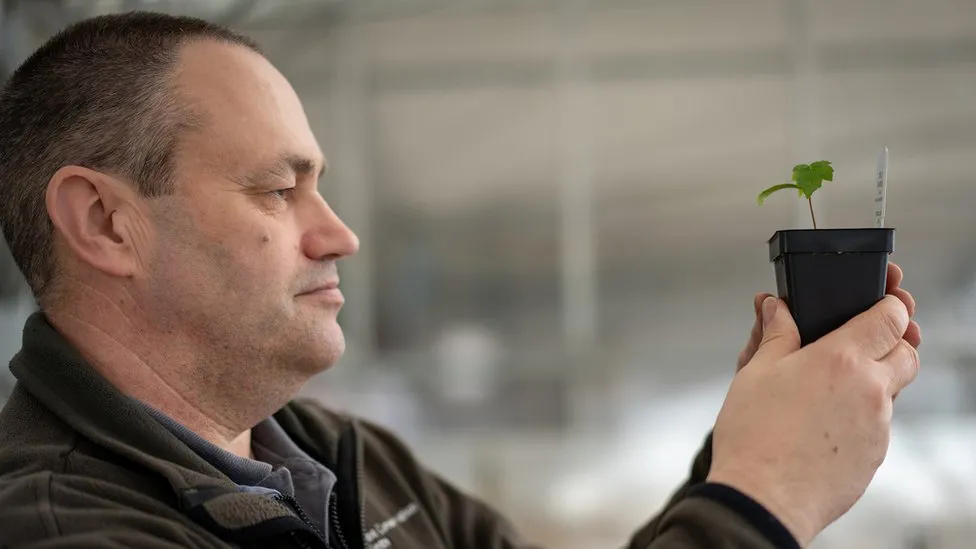Sycamore Gap’s Rescued Tree: A Story of Renewal and New Life
New hope has emerged for the iconic Sycamore Gap tree as new life sprouts from the rescued seeds and twigs following its mysterious cutting last year. The BBC News recently visited the secret National Trust center safeguarding the seedlings, witnessing the green shoots that offer a promising future for the tree. The Sycamore Gap tree, situated in a gap in Hadrian’s Wall, was a popular attraction, and its sudden felling in September led to widespread shock and dismay. Police are actively investigating the incident, treating it as a “deliberate act of vandalism.”
Only a stump remains, and the potential for a new tree to grow depends on its health. The National Trust swiftly salvaged young twigs and seeds thrown to the ground during the tree’s felling, preserving them in a high-security greenhouse in Devon. This center safeguards genetic copies of the UK’s most valuable plants and trees, acting as a backup in case of diseases, storms, or attacks.
The Sycamore Gap tree’s seeds and twigs have shown promise as green shoots emerge from large pots of soil in the greenhouse. While the National Trust is still deciding on its future, options include providing saplings to schools and communities or potentially replacing the stump if it fails to regrow. The priority is nurturing the tiny shoots; the greenhouse’s location remains undisclosed for security reasons.
The rapid response to the September incident aimed to preserve the genetic material of the Sycamore Gap tree. Local horticulturist Rachel Ryver was crucial in collecting scion (young twigs with buds) from the damaged tree, essential for grafting genetic copies. The collected specimens reached the Devon center the next day, where horticulturist Chris Trimmer conducted the grafting process.
Grafting, an ancient technique used by Egyptians and Romans, involves combining fresh roots with living twigs to create a hybrid. Successful grafting has resulted in nine surviving grafted plants and 40-50 seedlings. The experts believe the success rate should be high, given the hardiness of Sycamores. However, it will take three years to determine if the stump is healthy enough to produce the next tree.
The responsibility for preserving this iconic tree is significant, and horticulturists closely monitor the progress of the seedlings. While nothing can exactly replicate the original tree, the new life emerging from its genetic material will carry its own unique story. The seedlings, located hundreds of miles from the original site, stand as potential successors to the legacy of the Sycamore Gap tree.



















